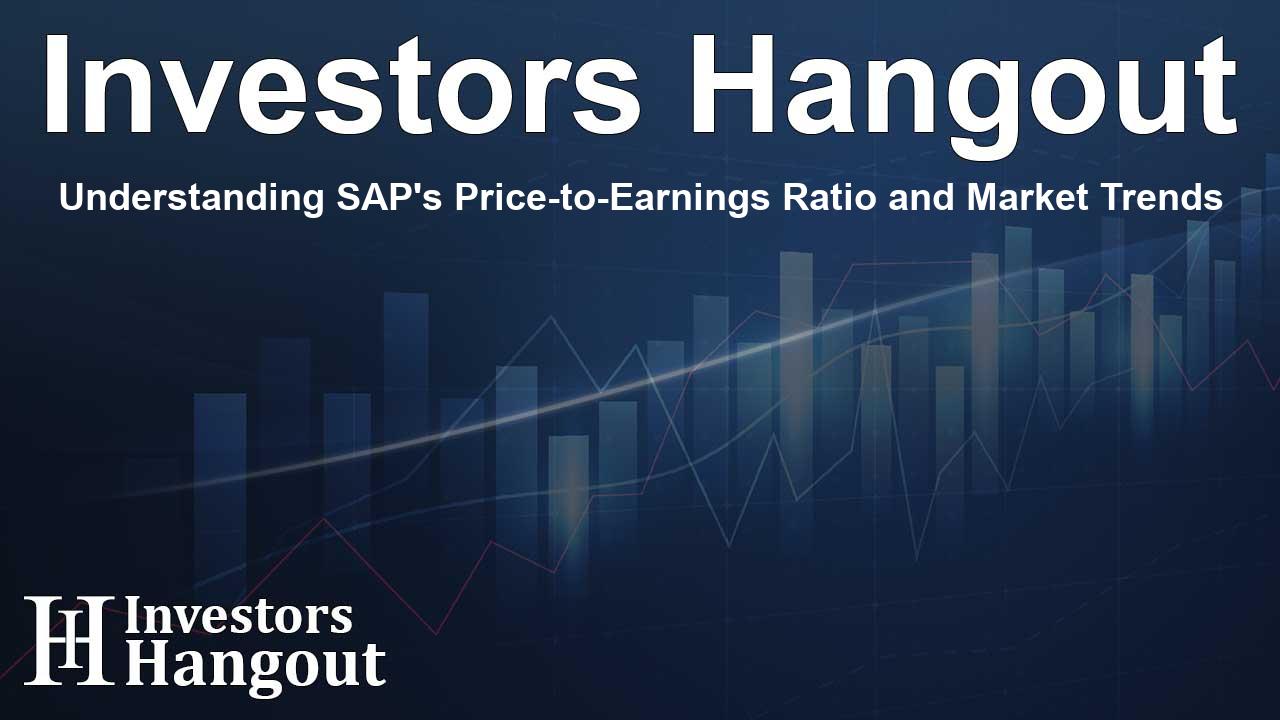Understanding SAP's Price-to-Earnings Ratio and Market Trends

Understanding SAP's Stock Performance
Currently, SAP Inc. (NYSE: SAP) sits at a stock price of $275.36, reflecting a modest increase of 0.56%. Over the last month, this stock has grown significantly by 5.70%, and over the past year, it's seen an impressive rise of 22.51%. Such trends have spurred optimism among long-term shareholders, who find encouragement in SAP's resilience and growth trajectory. However, evaluators are increasingly scrutinizing the price-to-earnings (P/E) ratio to determine whether the stock might be overvalued as it continues to rise.
Price-to-Earnings Ratio: A Vital Tool for Investors
What is the P/E Ratio?
The price-to-earnings ratio serves as a pivotal metric for assessing a company's value in relation to its earnings, offering insights for potential investors. Investors utilize this ratio to gauge the stock's market performance in comparison to historical earnings data and other industry benchmarks. A lower P/E ratio may imply that shareholders have lowered their expectations for future performance or suggest that shares may be undervalued.
How Does SAP Compare in the Industry?
When evaluating SAP's performance, current P/E ratios indicate a value of 42.05, significantly lower than the average P/E of 123.42 for the software sector. This disparity might lead investors to perceive SAP as underperforming compared to its competitors, or it might generate a viewpoint that the stock is undervalued. On the other hand, it raises questions about the stock's future performance in the broader market.
The Limitations of the P/E Ratio
While the P/E ratio offers valuable insights, it is essential to recognize its limitations. A lower ratio can indicate undervaluation, yet it can also signal that investor expectations for future growth are subdued. Moreover, while this metric is helpful, it shouldn't be used in isolation. Factors like industry trends, broader economic conditions, and business performance cycles can all influence stock price movements and should, therefore, be considered alongside the P/E ratio.
Making Informed Investment Decisions
For investors navigating the complexities of the stock market, combining the P/E ratio with a suite of other financial metrics and qualitative assessments is paramount. By doing so, investors can gain a comprehensive understanding of a stock's potential. This holistic view enables informed decisions, allowing them to better assess if SAP is an appropriate investment option based on their financial goals and risk tolerance.
Frequently Asked Questions
What is the current stock price of SAP?
The current stock price of SAP Inc. is $275.36.
How has SAP's stock performed over the past year?
SAP's stock has seen a notable increase of 22.51% over the past year.
What does a P/E ratio indicate about a company?
A P/E ratio indicates how much investors are willing to pay for each dollar of earnings. A lower P/E may suggest undervaluation or lack of growth expectations.
How does SAP's P/E ratio compare to its industry?
SAP's P/E ratio stands at 42.05, which is lower than the software industry's average of 123.42.
Should investors consider other metrics alongside the P/E ratio?
Yes, using the P/E ratio in conjunction with other financial metrics and industry analyses provides a more rounded view for making investment decisions.
About The Author
Contact Dylan Bailey privately here. Or send an email with ATTN: Dylan Bailey as the subject to contact@investorshangout.com.
About Investors Hangout
Investors Hangout is a leading online stock forum for financial discussion and learning, offering a wide range of free tools and resources. It draws in traders of all levels, who exchange market knowledge, investigate trading tactics, and keep an eye on industry developments in real time. Featuring financial articles, stock message boards, quotes, charts, company profiles, and live news updates. Through cooperative learning and a wealth of informational resources, it helps users from novices creating their first portfolios to experts honing their techniques. Join Investors Hangout today: https://investorshangout.com/
The content of this article is based on factual, publicly available information and does not represent legal, financial, or investment advice. Investors Hangout does not offer financial advice, and the author is not a licensed financial advisor. Consult a qualified advisor before making any financial or investment decisions based on this article. This article should not be considered advice to purchase, sell, or hold any securities or other investments. If any of the material provided here is inaccurate, please contact us for corrections.
